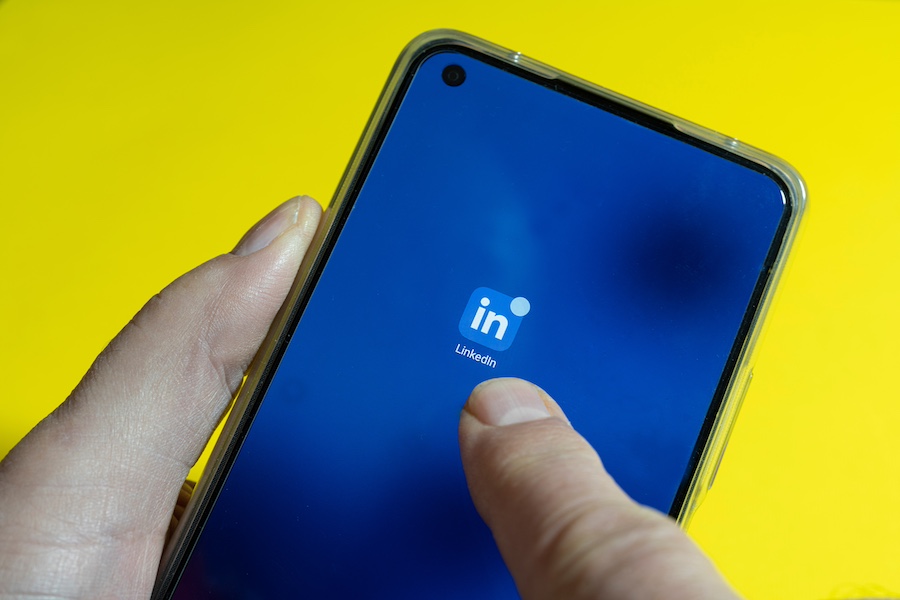How to Make a Lasting Impression on LinkedIn
By Julie Livingston
April 2024
About five years ago, I was amplifying my presence on LinkedIn to identify new clients for my fledgling PR consultancy.
People started noticing my content, including a former client prospect who was “lurking” on my profile, although she never commented or shared anything I had posted. She was now at a Fortune 50 company, and her C-suite female boss, who was flying under the radar, needed to stand out more within the organization and in the industry; COVID led to a lot of talent attrition and people feeling disconnected.
That’s when I started offering LinkedIn content strategy and ghostwriting for senior leaders. Over these past few years, I’ve honed my craft and deepened my understanding of what makes a LinkedIn profile get noticed.
Whether you’re hunting for a job, seeking another internal opportunity, or looking to build your network, LinkedIn is where you must have a robust profile. With more than 900 million users globally and 58 million companies in 200 countries, it’s a vibrant platform to tell your story, attract attention and build your career.
Build your brand.
When LinkedIn was first introduced more than two decades ago, most people thought of it only as a job search platform on which to post your résumé.
It’s evolved a lot since then, and although people use LinkedIn to look for employment and fractional work, I like to think of it as a personal brand-building tool.
Its purpose is to give people insight into who you are as a human being, combined with your knowledge, skills and work experience. The platform presents a unique opportunity to expand who you know — new connections who can help you get to your next career step.
Separate yourself from the pack.
Being in the PR space, the quality of your LinkedIn profile also speaks to your ability to communicate and tell a story effectively, as you use both language and graphics to set yourself apart from the rest.
So, be thoughtful about the content and the best way to illustrate who you are and what you’ve accomplished.
As a first step, look at the profiles of people in similar positions. What are they doing that’s worthwhile? How can you make your profile different?
Showcase the real you.
The top third of the LinkedIn profile is the first thing people see, so give it the most attention. I recommend getting a professional headshot, one where you look approachable, are in business casual clothing, smiling and making eye contact.
If you can’t have a headshot taken professionally, then ask a friend to take a photo of you with a simple, well-lit background. When it comes to wardrobe, I prefer colorful yet classic clothing.
Create the positioning statement.
Behind the headshot is an area that’s often overlooked but is prime real estate to telegraph who you are and what you do or aspire to do.
Using a graphics tool such as Canva (you can do this using their free version), add a short statement of two to five words in the upper-right area that encapsulates who you are or what you want to do next, such as PR Account Supervisor or Business Development Driver.
In the lower-right corner of this section, add a photo of you in action at work — delivering a presentation, having a conversation or winning an award. This demonstrates your self-confidence and gives context to your personality and achievements.
Customize the introduction and content sections.
In the header where your name appears on the left, you can customize and add a descriptor and link that takes you to the platform of your choice. Mine goes to my website, but you can also direct it to a landing page, portfolio or video.
Remember to add your email under the Content section. I can’t count the number of times I’ve tried to contact someone, and there’s been no email address, which is incredibly frustrating, especially if a recruiter or job prospect is trying to contact you. Make sure you include a direct way to get in touch.
Make it about you.
The About section is akin to a personal branding story, where you summarize your background. Make it vivid so that people can envision you standing before them.
You have 2,000 words to do this, but the first three sentences are the ones that appear before clicking “Read More,” so make them count by using keywords such as public relations, content, media relations, communications skills and social media.
I like to start with a short story (make it as concise as possible) that demonstrates your leadership skills, energy and passion for your work. How did you get to where you are today? Who/what inspired you? What was your path to a PR career?
Update work history and education.
Depending on your PR career stage, you can use the Experience section in a more traditional way (more like a résumé, listing results, etc.) or as a landing page.
Use the title slot to add a statement encapsulating your main achievement, such as “Media Placement for Fortune 500 Clients.” Add the employer’s name in the appropriate slot.
Add a media section to bring the experience section alive. Use that space to upload media placements you’ve garnered, photos of you delivering a presentation, holding an award, or a snapshot of you and your colleagues at an industry event or trade show. This demonstrates your interest and passion for public relations.
In the Skills section, there is a prompt to showcase five of your top skills, making you more searchable. Again, refer to your keywords. If you click the edit tool (a pencil), you can now click and drag the skills so they are in priority order.
Utilize recommendations.
Many people disregard Recommendations because they feel uncomfortable about requesting them or because they don’t know who to ask. These are worthwhile and can help recruiters and hiring managers see your value — how you moved the needle — to a team or organization.
I’ve found that it’s best to request a recommendation while you’re in a job or just after you depart — when you’re still top of mind.
The best way to optimize your LinkedIn profile is to learn about and experiment with the company’s continuously updated features. This is an excellent exercise in becoming more familiar with the platform and will keep your profile current.



